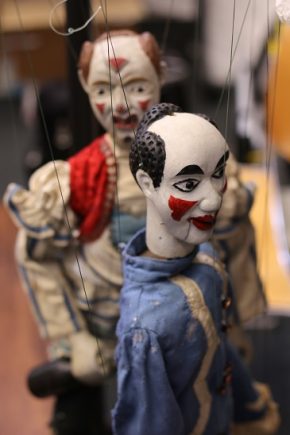
The VARI Encounters on the Shop Floor project has a few small micro teams called Design Clusters, made up of creative individuals using different kinds of arts practices to investigate embodied knowledge. That is, the knowledge and skills which can be found in our hands as much as in our brains – almost like an extension of muscle memory.
One of those Design Clusters is led by Rachel Warr, Puppetry Director, Dramaturg and Puppeteer for Dotted Line Theatre.
As part of her Encounters research into the fine hand skills of puppetry, we invited Rachel to take part in the V&A’s Festival of Performance and to use a number of puppets in our collection that hadn’t been touched for decades.
(All photographs by Eileen Budd, unless otherwise noted)
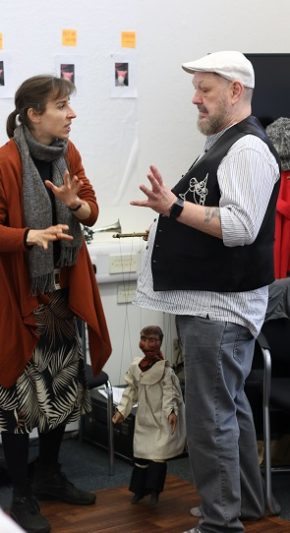
Tricks with Strings – Embodied Practice and V&A Festival of Performance, by Rachel Warr
I and my team have just presented Tricks with Strings at the V&A’s ‘Festival of Performance’. It was a show using English string marionette puppets, c.1870s, from the V&A collection.
There are a few of these puppets on display in the Theatre and Performance galleries, but most of them are kept in storage and it had been several decades since the puppets were last used in performance.
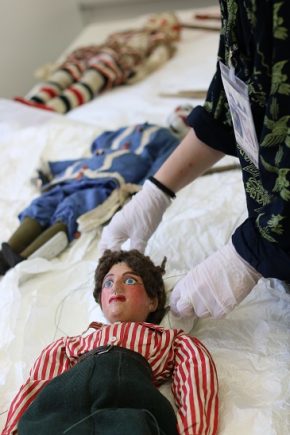
These puppets were part of the ‘Tiller Clowes Troop’, one of the last Victorian travelling marionette groups, who toured Britain with a portable theatre. The puppets are beautifully carved, painted and clothed. Some of them are trick marionettes, designed to perform unusual manoeuvres by way of extra strings and mechanisms.
They are an important part of this country’s puppetry history and heritage. There is only a small amount of work with sting marionettes currently taking place in the UK, much of the puppetry in contemporary mainstream theatre is loosely inspired by the techniques of Japanese Bunraku puppetry. It could be argued that the English tradition of string marionettes is in danger of dying out. Contemporary audiences are unused to seeing work with marionettes, although when they do, they are always enthralled by them.
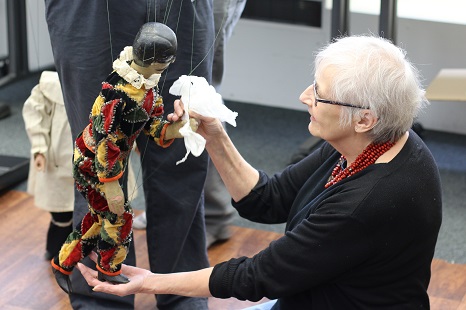
Working on the project was informative in a number of ways. There were things to learn from the puppets. You can always learn from how things were done in the past. For example, the 19th century puppet controls (the wooden bars from which the strings hang) are very different from the ones being used by puppeteers today, so this required a shift of technique in how we used our hands to operate the puppets.
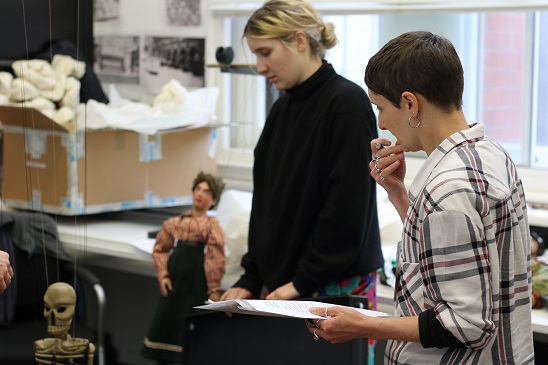
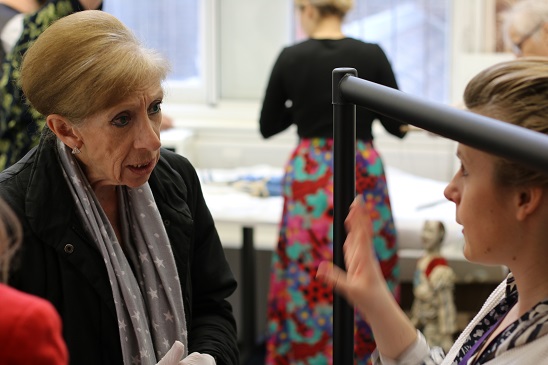
There were things to learn from collaborating with the curators. I am puppetry director working in live theatre, but I firmly believe in sharing knowledge across different disciplines.
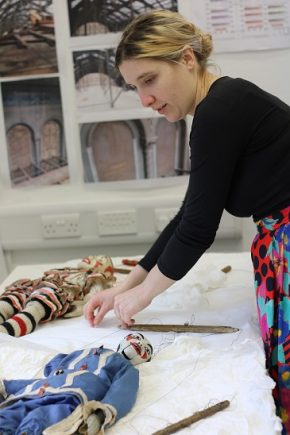
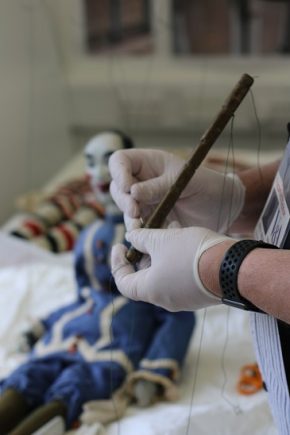
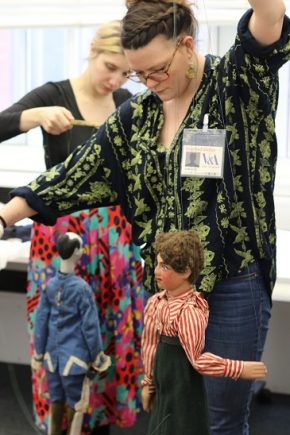
The practical part of the project began with my team and I, working with two of the curators, to untangle and replace damaged strings. There was an exchange of knowledge and skills. It was very exciting to then get these puppets up on their feet and bring them to life again. Puppets are designed for movement, the static look of them of course is important, but it is when they are moving that their character and their purpose truly emerge.
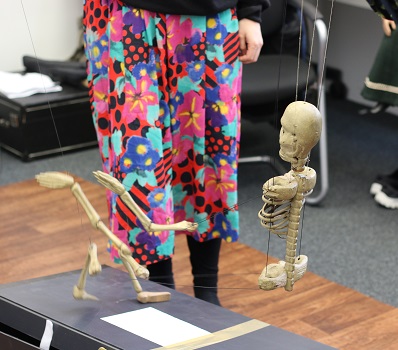
In putting the performance piece together, I tried to achieve a balance between acknowledging the historical context of the puppets, and creating something on no budget for a modern audience. The performance was in the spirit of a Victorian marionette show, but not on a proscenium Victorian marionette stage. In this way, the action of the puppeteers was visible to the audience and enabled everyone to see the manipulation of the strings.
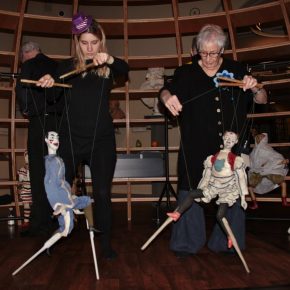
On the final day of the festival we performed three times at the Globe Space in the European galleries of the V&A. Performances were packed out, not only inside the Globe but all around the outside with audience looking through the slats.
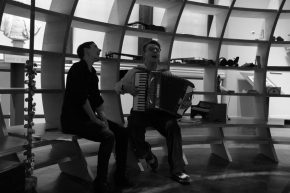
We had a full spectrum of ages in our audience, young and old; and lots of interest with people coming up after the performances to ask us things about the puppets. The curators and I are already talking about what we might do with the puppets at next year’s Festival of Performance.
We only had a day working with the puppets, but they were a joy to work with and I think their characters shone through as fresh as ever.
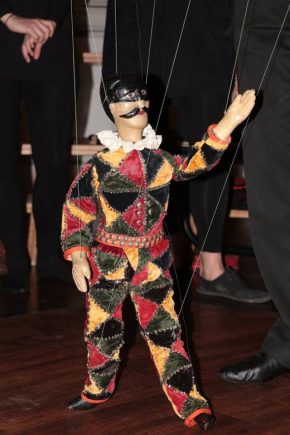
You can find out more about the work we are doing on the VARI Encounters project through our VARI webpages.
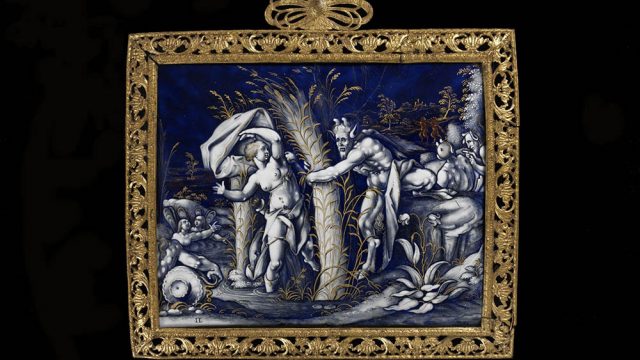

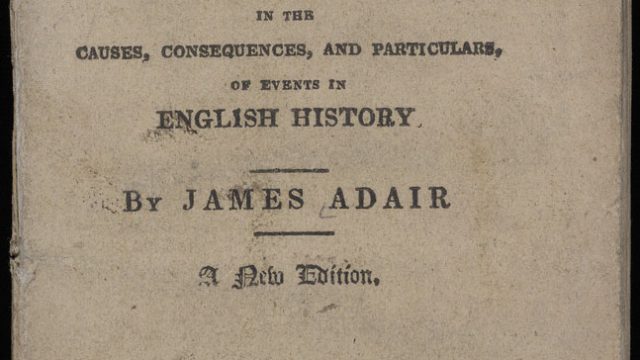
Having read this I believed it was extremely informative. I appreciate you finding the time and energy to put this content together. I once again find myself personally spending a significant amount of time both reading and leaving comments. But so what, it was still worth it!
Thanks for taking the time to read our blog on the behind the scenes work with puppets and for leaving a comment. Its great to know you found it informative and enjoyable. I hope you keep checking our blog for more updates on the work of the V&A Research Institute.